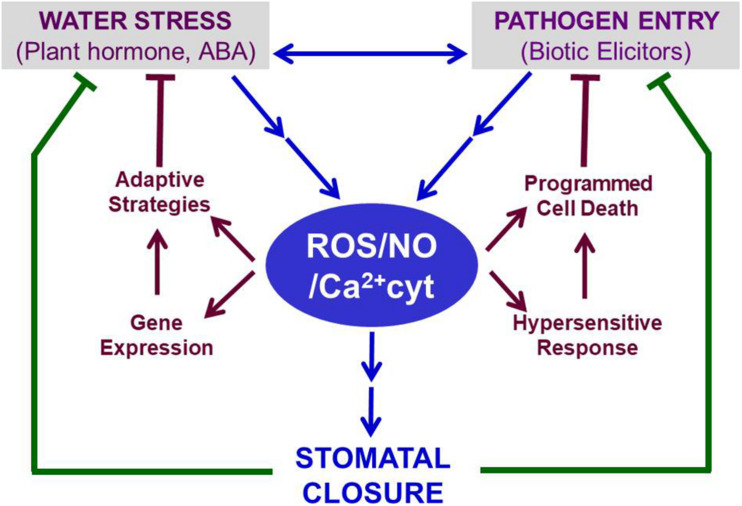FIGURE 2.
Stomatal closure induced under conditions of abiotic (e.g., drought) or biotic (e.g., pathogens) stress serves as a common defense mechanism. In guard cells, ABA typically raises the levels of ROS, NO, and Ca2+. These three secondary messengers bring out stomatal closure through a series of signaling events (as illustrated in Figure 1). The retention of water within leaves, when stomata are closed, helps to relieve water stress. In parallel, the closed stomata restrict microbial pathogens’ entry into leaves. The trio of ROS, NO, and Ca2+ parallelly induce adaptive events to mitigate water stress and limit pathogen spread by triggering HR and PCD. Thus, ROS, NO, and Ca2+ can be considered vital regulators, participating in ABA-induced defense against abiotic and biotic stress. Further details are described in the text. Abbreviations used here are listed in the Appendix.

